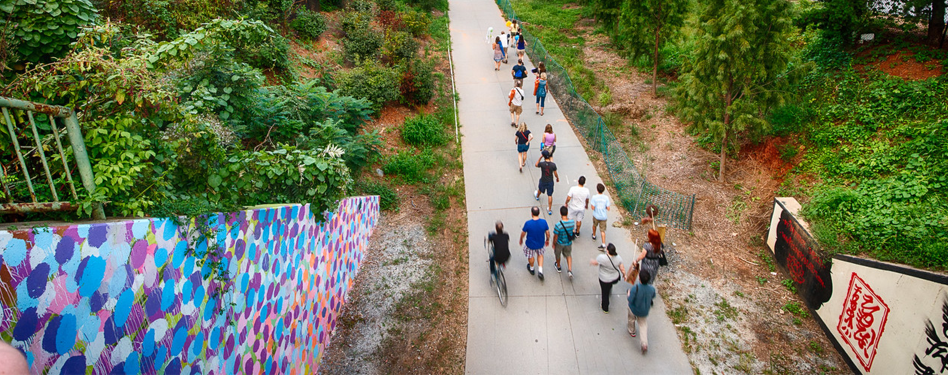
More than 15 years ago, a Georgia Tech architecture and urban planning master’s student named Ryan Gravel delivered a thesis statement that is leading to the transformation of the City of Atlanta. His plan for a combination of a transportation network, parks and bike trails connecting people across the city is now a 25-year, $4.8 billion project, spanning more than 640 acres of land, known as the Atlanta BeltLine.
The Atlanta BeltLine is a sustainable development project that is now one of the most comprehensive urban design efforts under way in the United States. With project completion targeted for 2030, the Atlanta Beltline Project aims to connect 45 in-town neighborhoods via a 22-mile loop of multi-use trails, modern streetcar lines, parks and open space—making Atlanta a more sustainable, livable and inclusive place.
To date, the Atlanta BeltLine’s planned urban design projects will include 50 miles of streetcar and light rail transit, 33 miles of multi-use trails, 1,300 acres of new or renovated open space, 5,600 units of affordable housing and public art—all sustainably built.
Currently, Atlanta BeltLine sustainability guidelines require compliance with the SITES Rating System, ensuring that the Atlanta BeltLine corridor will be built using best practices in green design and construction.
Examples of current Atlanta BeltLine Sustainability Guidelines requirements:
- 90 percent or more of materials for the corridor must be regionally sourced, in compliance with SITES Credit 5.6.
- All construction activities must comply with SITES Construction Prerequisites 7.1 and 7.2.
- All maintenance procedures for parks will follow Organic Landcare BMPs for the two-year establishment period prior to turning over to City of Atlanta Parks and Recreation in compliance with SITES Prerequisite 8.1 and Credit 8.4.
Moving forward, the Atlanta BeltLine will require that all designed parks achieve SITES Silver or Gold certifications—making the Atlanta BeltLine the first municipal agency in the country to require SITES. Enota Park will be the first park under the new standard.
To learn more about the Atlanta BeltLine, visit “The Atlanta Beltline: An Interview with the Principal Landscape Architect” Part 1 and Part 2, on the American Society for Landscape Architects' professional practice networks blog The Field.
